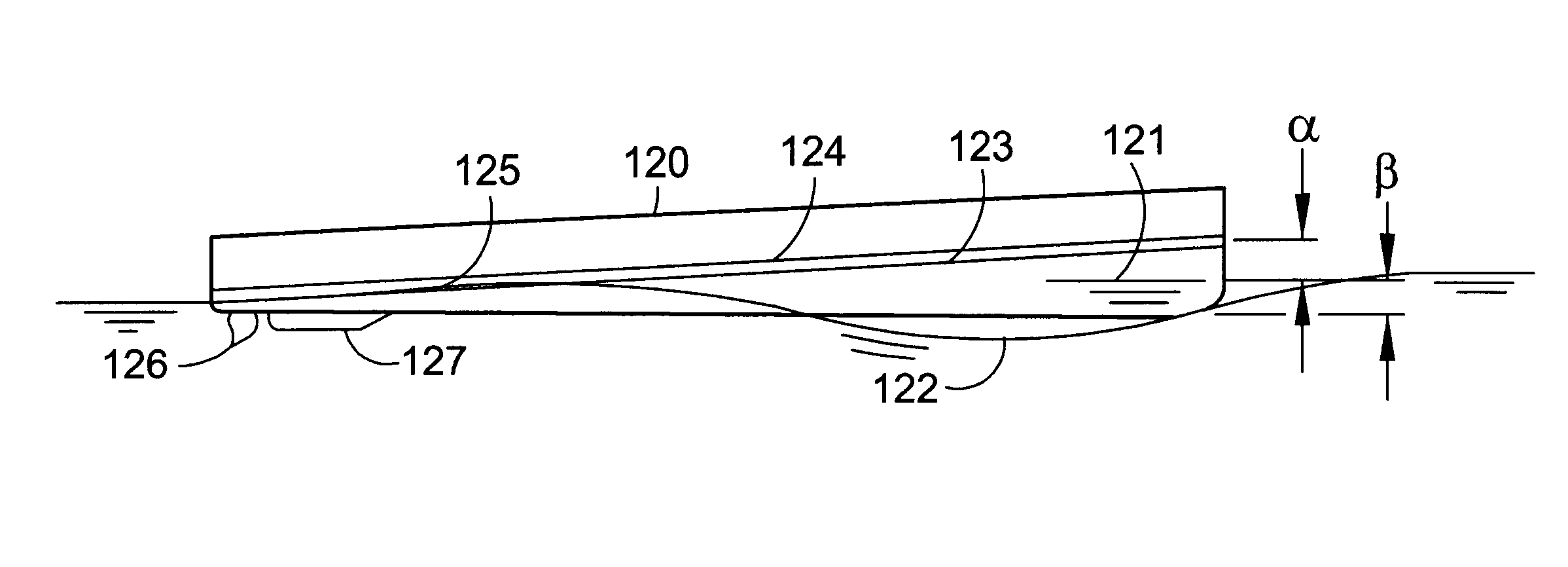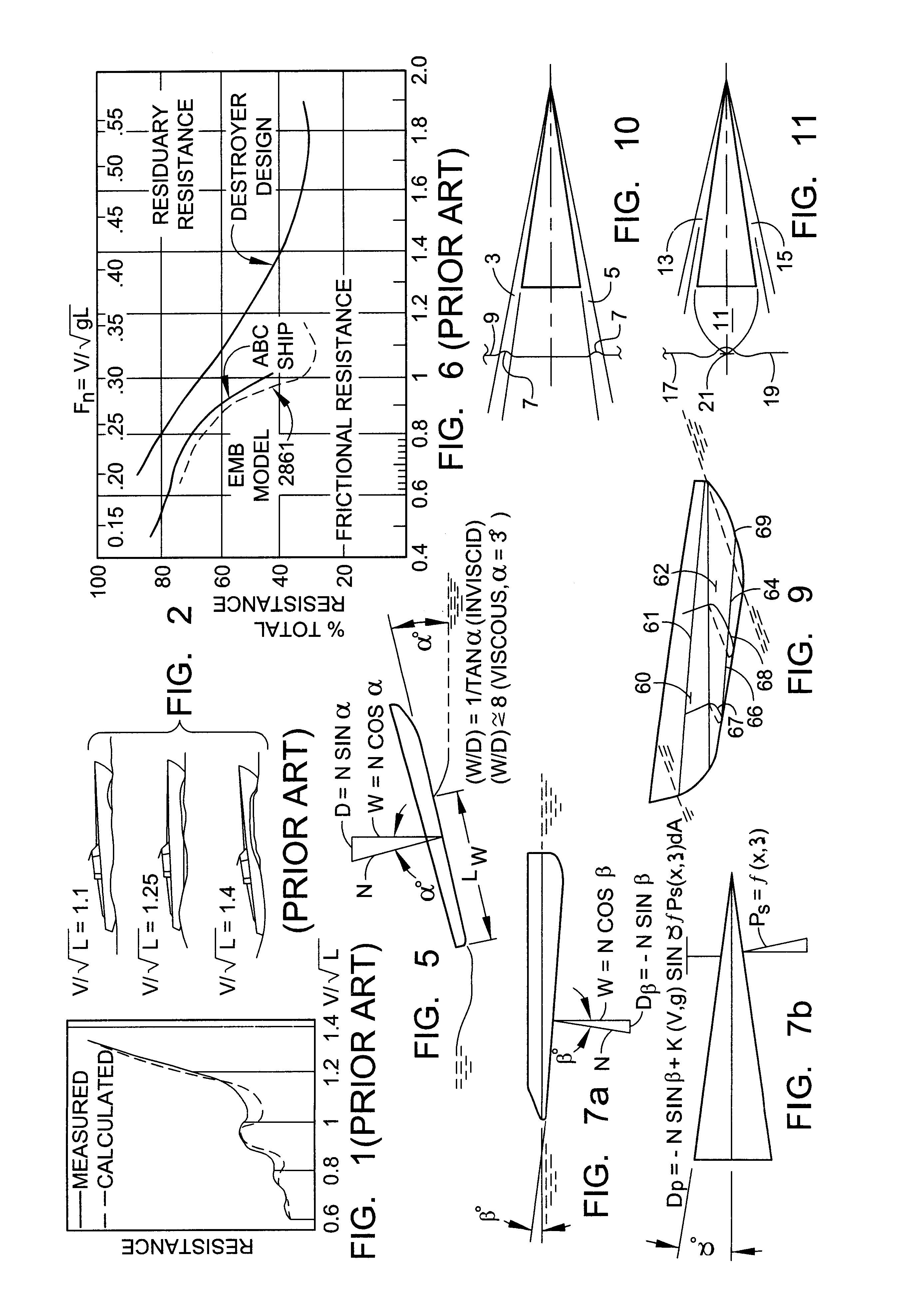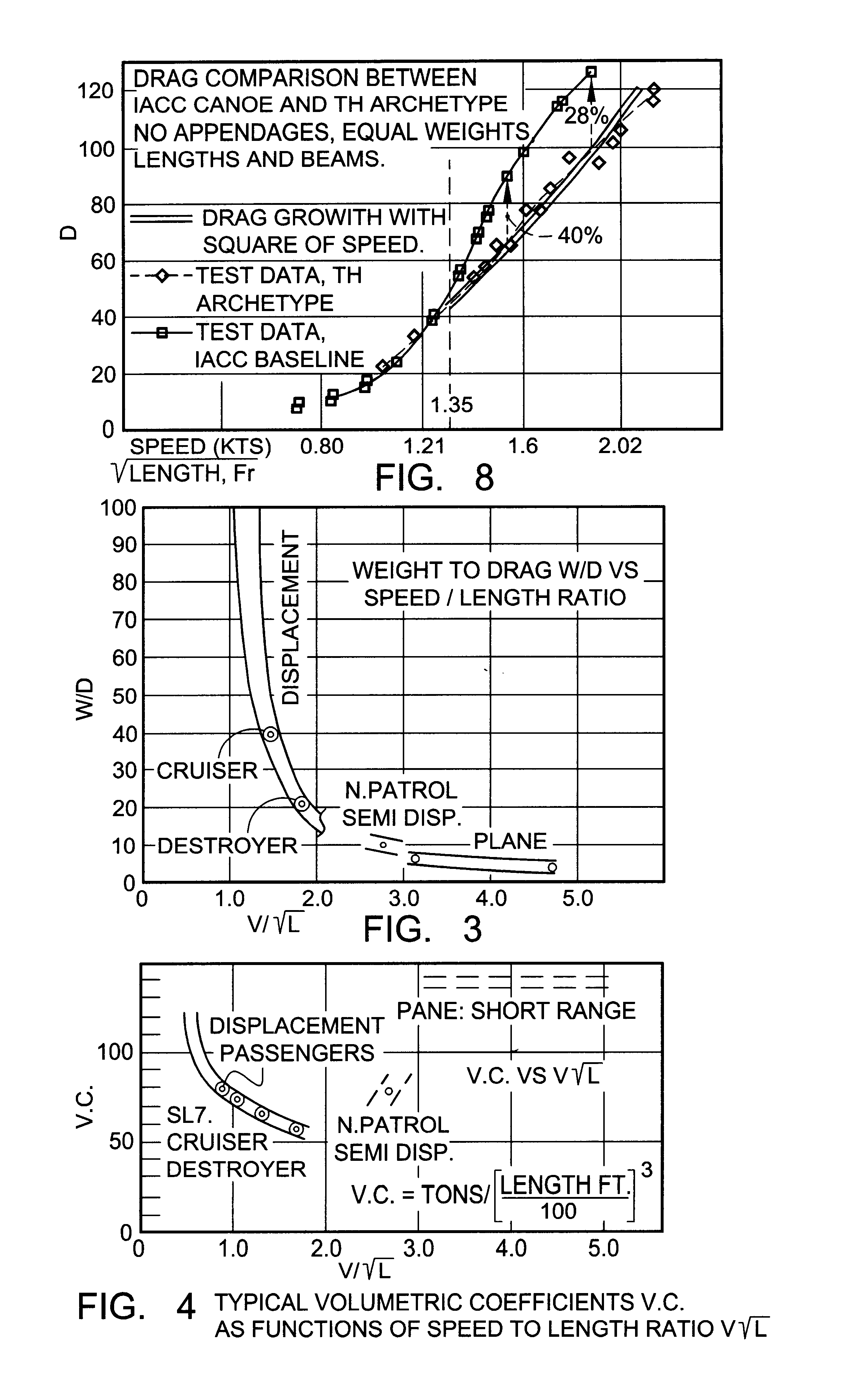Transonic hull and hydrofield (part III)
a transonic hull and hydrofield technology, applied in special-purpose vessels, vessel construction, vessel movement reduction by foils, etc., can solve the problems of inability to meet the needs of th, so as to improve the performance and maneuverability of the transonic hull, the effect of good efficiency
- Summary
- Abstract
- Description
- Claims
- Application Information
AI Technical Summary
Benefits of technology
Problems solved by technology
Method used
Image
Examples
Embodiment Construction
The nature and scope of the present invention can be better understood by reviewing the principal characteristics of conventional hulls, which have certain serious inherent problems in calm water and in an adverse sea, and examining also the limits and potential of transonic hulls TH and their hydrofields in patent application Ser. Nos. 08 / 814,418 and 08 / 814,417, all which sets the conceptual inquiry solved by the present invention.
I. Characteristics and Problems of Conventional Hulls.
It is necessary for this review to separate the conventional hull designs by hull types in accordance to their operational speed envelopes. The envelopes are expressed for each hull type in terms of weight-to-drag ratios as function of speed-to-length ratios, best considered together with their corresponding volumetric coefficients, which are indicative of longitudinal surface and volume distributions responsive to their speed envelopes.
1a. Displacement Hulls.
Displacement hulls sustain boat weight by b...
PUM
 Login to View More
Login to View More Abstract
Description
Claims
Application Information
 Login to View More
Login to View More - R&D
- Intellectual Property
- Life Sciences
- Materials
- Tech Scout
- Unparalleled Data Quality
- Higher Quality Content
- 60% Fewer Hallucinations
Browse by: Latest US Patents, China's latest patents, Technical Efficacy Thesaurus, Application Domain, Technology Topic, Popular Technical Reports.
© 2025 PatSnap. All rights reserved.Legal|Privacy policy|Modern Slavery Act Transparency Statement|Sitemap|About US| Contact US: help@patsnap.com



